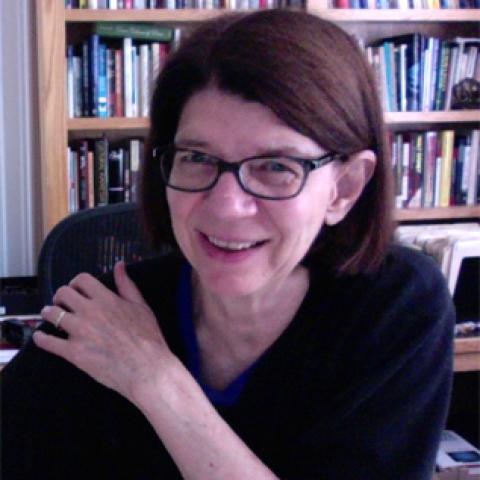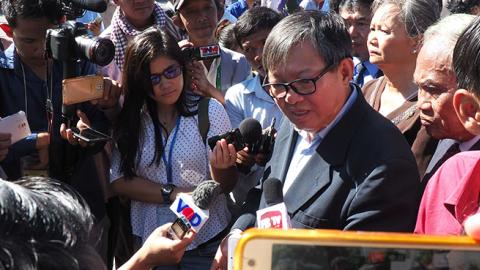p. Native to Southeast Asia, the reticulated python is one of the world’s longest, strongest, heaviest snakes. Once it coils itself around its prey and begins squeezing, the prey will be dead in a matter of minutes. Of longer duration is the swallowing: the python opens its expandable jaws, grips the carcass, and begins the laborious process of ingesting a meal that occasionally rivals it in size.
This is not a bad metaphor for the regime of Hun Sen, the former Khmer Rouge commander who switched sides when the Vietnamese invaded Cambodia in 1977, and subsequently became Prime Minister in 1985. One difference is that the python kills swiftly, while Hun Sen and his ruling Cambodian People’s Party have spent 32 years choking the life out of their country. Another difference is that the python squeezes first and swallows second, while the Hun Sen regime does both at the same time.
Adopted in 1993 under the Paris Peace Accord, the constitution of Cambodia originally guaranteed free regular elections, universal equal suffrage, the secret ballot, and the right to organize political parties. In reality, these guarantees have long been subject to squeezing: elections are rigged, information manipulated, opposition figures harassed, threatened, and attacked. At the same time, those who assist in the squeezing have been rewarded with a share in the swallowing.
The most conspicuous reward has been the arbitrary power to confiscate the land of less fortunate countrymen. Even more than in China, land grabs are endemic in Cambodia, in large part because, in addition to killing two million people in the 1970s, the Khmer Rouge destroyed nearly all property records and public land registers. A reform law was passed in 2001, but according to charges brought before the International Criminal Court in the Hague, that law has not prevented roughly 770,000 Cambodians from being driven from their homes, farms, and villages.
p. The predatory nature of the Hun Sen regime was driven home to me in the summer of 2015, when I visited Cambodia as part of a research trip looking at best practices in the U.S. government’s far-flung system of foreign-language media. In Cambodia my focus was the Khmer services of Voice of America (VOA) and Radio Free Asia (RFA). At the time, these two news organizations maintained separate bureaus in Phnom Penh, so a key question on my mind was whether the American taxpayer needed to be paying for what critics in Washington were calling a wasteful “duplication” of effort.
Once on the ground in Cambodia, I realized that, while there were duplications in the system, in Cambodia the co-existence of VOA and RFA was more accurately described as division of labor. Both services had been in Cambodia for decades—VOA since 1962, RFA since 1997—and over that time they had grown to fill complementary niches.
For example, VOA had three reporters based in Phnom Penh who mainly focused on the doings of government officials and leaders in the Cambodian People’s Party and its then opposition, the Cambodian National Rescue Party. Like their counterparts in capital cities around the world, these VOA reporters could not just stroll into the corridors of power; they had to jump through certain hoops. Repellent as it sounds to most Americans, they jumped through at least some hoops, for three reasons.
First, the alternative was to have no access whatsoever. Second, only one-third of VOA’s radio, TV, and Internet programming was devoted to news about Cambodia; the other two-thirds were devoted to world news and news about America, supplemented by feature stories on topics of interest, such as health, technology, and the experiences of Cambodians living in the United States. And third, there was another U.S. news outlet in the country that did not jump through any hoops: RFA.
Fully 95 percent of RFA’s news reporting was about Cambodia, and the majority of its journalists, 20 by one estimate, were scattered throughout the country doing hard-hitting investigative reporting about land grabs, illegal logging, labor conflicts, environmentally risky dam projects, and all the other abuses committed by the python—and by its big brother, the Chinese dragon.
Needless to say, this reporting did not endear RFA to the Hun Sen regime. But it did gain a large and loyal following among ordinary Cambodians, because they knew from bitter experience that RFA was telling it like it is. RFA’s scrappy reporters were not doing propaganda, in the sense of fabricating stories and spreading lies. But they were doing adversarial journalism, in the sense of exposing the python’s grip and greed. If VOA’s operation was less adversarial, that made sense, because the American and Cambodian governments were officially on good terms, and the presence of American NGOs and media provided a counterweight to the excesses of the regime.
This view was shared by Kek Galabru, the highly respected head of the Cambodian League for the Promotion and Defense of Human Rights. When asked to compare VOA and RFA, she stated that RFA’s “local coverage” was less “impartial” than VOA’s more deferential style, and that sometimes the latter allowed Hun Sen to retain the “façade of democracy” and “not be seen as a pariah.” But at the same time, she emphasized that both VOA and RFA were seen as independent and trustworthy, especially in the countryside, where “people rely on them to find out what is happening.”
The importance of such “surrogate media” is often lost on outsiders. For example, at the time of my visit, Phnom Penh was also home to two stubbornly independent English-language newspapers, the Cambodian Daily and the Phnom Penh Post. Widely read by the large expat and NGO community, both newspapers served as a training ground for a cohort of courageous, highly principled Cambodian journalists. This robust English-language presence made it hard for an Anglophone like me to appreciate the degree to which the Khmer-language media—including the Khmer editions of the Cambodian Daily and the Phnom Penh Post—were controlled by the regime.
In a similar way, it was hard for a visitor like me to appreciate the precarious situation of the U.S. media presence, to say nothing of the many American and other Western NGOs, human rights groups, and democracy assistance efforts that were operating in Cambodia at the time. Indeed, in the summer of 2015 it seemed to me that these circles were imbued with a spirit of cautious optimism, based on two factors: growing public outrage at Hun Sen’s repressive ways, and the rise of social media as the preferred means of communication among younger Cambodians.
These factors had converged in the protests following Hun Sen’s highly dubious victory in the elections of 2013. As one young VOA staffer explained to me, social media had recently taken off in Cambodia, and not just among urban elites. On the contrary, many Cambodians from poor and rural areas had followed their counterparts in other parts of the world and leapfrogged over earlier technologies like landlines and desktop computers—in essence, going from zero to the data-enabled smartphone.
This social media boom coincided with Hun Sen’s latest effort to manage the smooth transfer of power from himself to himself. So when he attempted to ban VOA and RFA in the run-up to the 2013 election, he provoked a reaction both unexpected and vehement. VOA and RFA went viral on Facebook and Twitter. Young people used their smartphone cameras to monitor polling stations and report abuses. And when Hun Sen declared himself the winner, tens of thousands of ordinary Cambodians, not just city dwellers but also people from the increasingly ravaged countryside, marched in the streets of Phnom Penh.
This being Cambodia, the optimism I sensed in 2015 was cautious at best. But among young people, at least, it was contagious enough that, when rumors began to circulate of new laws directed at foreign NGOS, human rights groups, independent media, and most ominous, a new China-enabled “cyber-security” measure aimed at transforming the Cambodian internet from a vital, humming web of free expression to a stifling, chainmail cloak of surveillance, propaganda, and censorship, I found myself dismissing them as just that—rumors.
But they were not rumors. They were portents. In the first week of September 2017, Kem Sokha, head of the opposition Cambodian National Rescue Party, was sentenced to five months in prison for having “conspired with a foreign government” to overthrow the regime. This “conspiracy” consisted of prior conversations with American academics and others about strategies for building a grassroots political organization. But such details hardly mattered, because the python was busy strangling not just Kem Sokha and his party (banned in November 2017) but the entire political opposition, as well as labor unions, NGOs (including the U.S.-funded National Endowment for Democracy), and every other institution comprising Cambodian civil society.
And as the Economist wrote in December, “Even reporting on resistance to the crackdown is difficult.” On the day of Kem Sokha’s arrest, the Cambodia Dailypublished its last issue, with the headline “Descent into Outright Dictatorship.” Here the charge was failure to pay $6 million in back taxes. Having not made a profit for 10 years, the paper was in the middle of disputing that charge when it was ordered to close. And the same strategy of bogus accusation, harassment, and outright suppression has also led to the expulsion of VOA and RFA. The Economistcontinues:
In the past four months the government has closed two American-funded radio-news services, dozens of broadcasting frequencies and one of the country’s best independent newspapers on trumped-up tax charges. Many correspondents have fled; others nurse cheap beers in Phnom Penh’s bars and fret over finding new employment. They are the lucky ones. Two former radio journalists, Uon Chhin and Yeang Sothearin, face 15 years in prison for supplying information which “undermines national defence”. The voices of ordinary Cambodians are kept quiet too. Social-media posts calling for political change land their authors—frequently students—in prison.
I believe it was Anton Chekhov who wrote, “The world is ugly, and people are sad.” This is true, as we all know. But it is also abstract. The “former radio journalists” Uon Chhin and Yeang Sothearin were among the brave, scrappy reporters working for RFA, and they are not abstract. They are as concrete and real as the bitter history of their country. And it is very ugly indeed to see that country gripped in the jaws of a cold and devouring monster.















